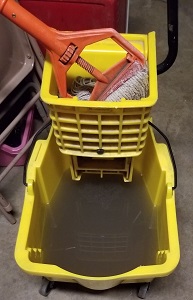
Photo credit: jb
Remember when you opened your IRA account? And the broker or advisor handed you the 37-page custodial documents? Read that cover-to-cover, dintcha?
Unfortunately, too many of us don’t read these documents closely, and may end up getting a big surprise later on. What sorts of surprises, you might ask…? Well, here are two major surprises that could await you:
Per Capita or Per Stirpes? If you have multiple beneficiaries of your IRA, how your IRA custodian determines between these two will be important to know. This difference will determine how your account will be distributed. Here’s how – Per Capita means that, for example, if you have three equal beneficiaries designated on your account and one of the beneficiaries pre-deceases you, the account will then be split in two, between the two remaining beneficiaries. If the account were to be split Per Stirpes, the two remaining beneficiaries would each receive a 1/3 share, and the beneficiaries (or the estate) of the deceased beneficiary would receive the remaining 1/3 share. Typically there is a check-box on the beneficiary form to help you designate your beneficiaries as you wish, and if not specified by you, ultimately the control comes down to the custodial documents. This becomes even more important with the second consideration…
Divorced, but forgot to change beneficiary form? Depending upon the custodial agreement, the custodian could follow the court’s ruling, wherein the divorce decree may declare that all marital property is split as indicated and named in the document, with no other splitting to be done. Or, the custodian could go strictly “by the book”, where the beneficiary form indicates a specific individual as the primary beneficiary, regardless of any other outside document. And here is how the Per Stirpes/Per Capita issue becomes important in this case: what happens if the former spouse is the only named beneficiary on the account (no secondary beneficiary(ies)), and the former spouse pre-deceases the account owner? If the custodian holds to the Per Stirpes definition, the former spouse’s heirs could reap the benefits of the account… scary huh?
So, in the end, it pays to know a little about the custodial documents on your IRA account, just so you don’t have any surprises. If you don’t understand it or can’t follow what the document is telling you, make your advisor explain it to you – especially these two factors mentioned above. That’s part of an advisor’s job – to advise you – and you’re paying them to do that sort of thing.


 Sterling Raskie, MSFS, CFP®, ChFC®
Sterling Raskie, MSFS, CFP®, ChFC® The latest in our Owner’s Manual series, A 401(k) Owner’s Manual, was published in January 2020 and is available on
The latest in our Owner’s Manual series, A 401(k) Owner’s Manual, was published in January 2020 and is available on  A Medicare Owner’s Manual, is updated with 2020 facts and figures. This manual is available on
A Medicare Owner’s Manual, is updated with 2020 facts and figures. This manual is available on  Social Security for the Suddenly Single can be found on Amazon at
Social Security for the Suddenly Single can be found on Amazon at  Sterling’s first book, Lose Weight Save Money, can be
Sterling’s first book, Lose Weight Save Money, can be  An IRA Owner’s Manual, 2nd Edition is available for purchase on Amazon. Click the link to choose the
An IRA Owner’s Manual, 2nd Edition is available for purchase on Amazon. Click the link to choose the  Jim’s book – A Social Security Owner’s Manual, is now available on Amazon. Click this link for the
Jim’s book – A Social Security Owner’s Manual, is now available on Amazon. Click this link for the  And if you’ve come here to learn about queuing waterfowl, I apologize for the confusion. You may want to discuss your question with Lester, my loyal watchduck and self-proclaimed “advisor’s advisor”.
And if you’ve come here to learn about queuing waterfowl, I apologize for the confusion. You may want to discuss your question with Lester, my loyal watchduck and self-proclaimed “advisor’s advisor”.